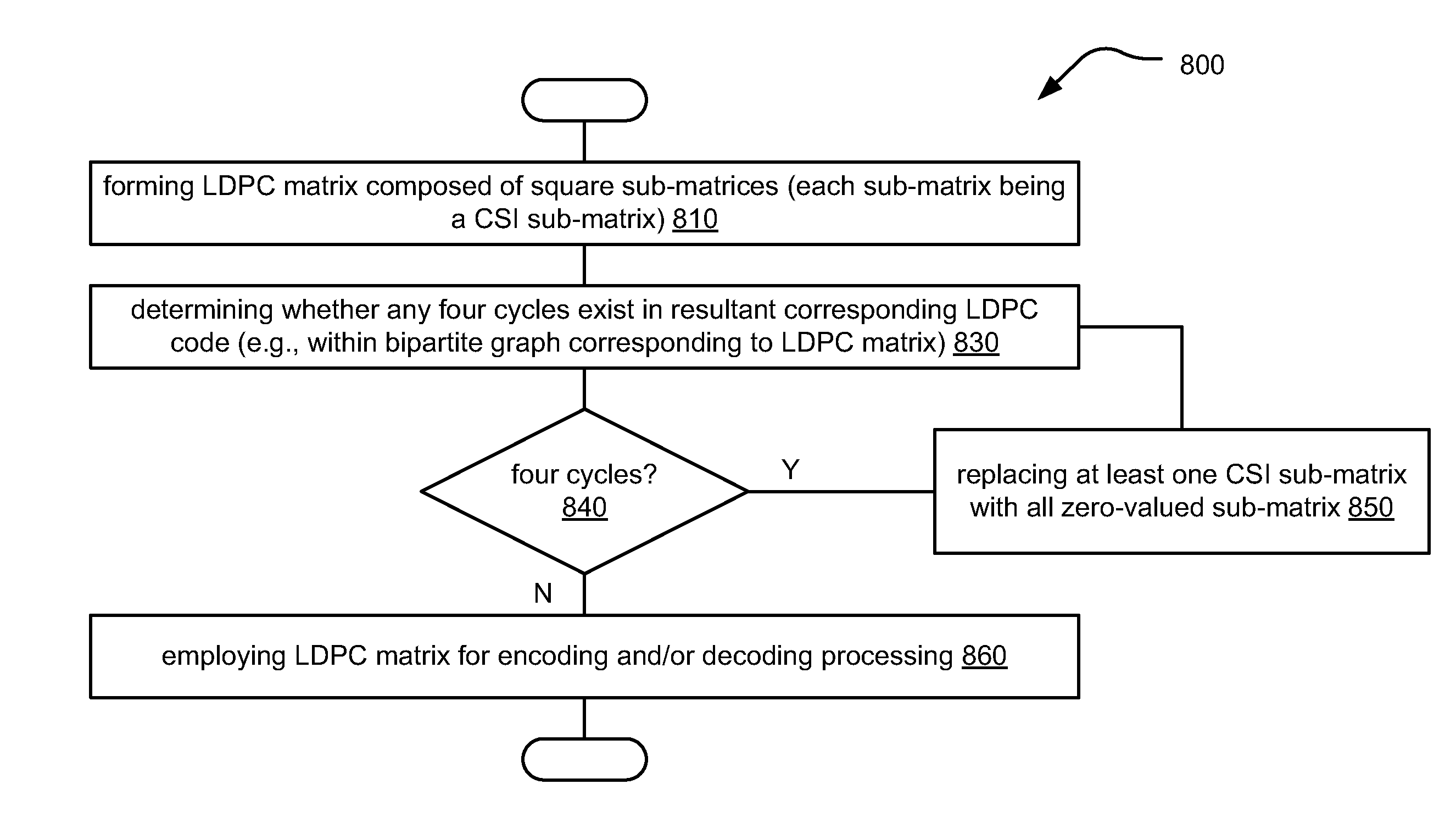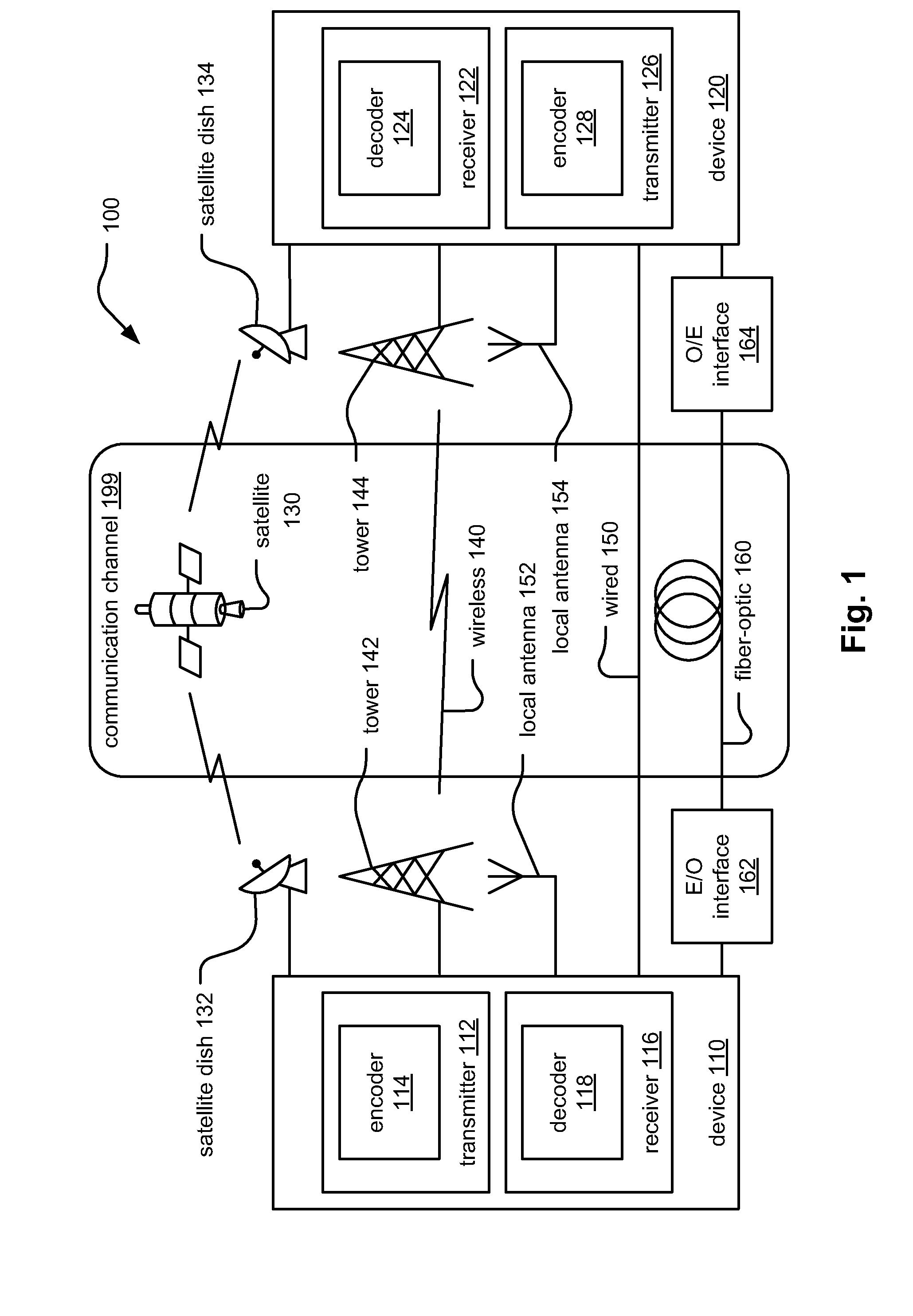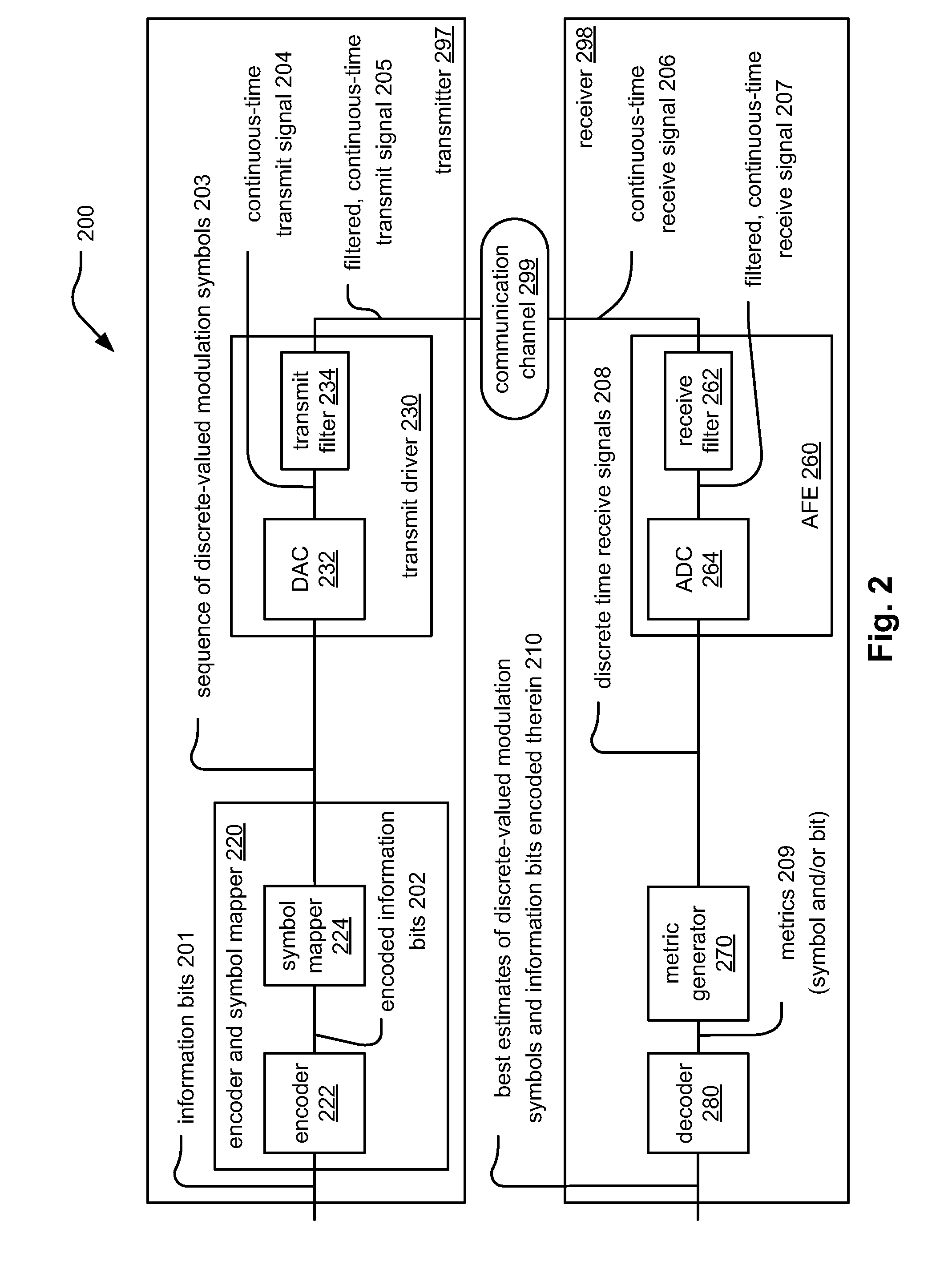Quasi-cyclic LDPC (low density parity check) code construction
a low density parity check and code construction technology, applied in the direction of coding, error prevention, digital transmission, etc., can solve the problems of preventing the use of ldpc codes in very high data rate communication system application areas, preventing the use of ldpc codes in various communication systems or devices, and failing to provide an adequate means by which to design and compare various ldpc codes efficiently
- Summary
- Abstract
- Description
- Claims
- Application Information
AI Technical Summary
Benefits of technology
Problems solved by technology
Method used
Image
Examples
embodiment 600
[0077]FIG. 6 illustrates an embodiment 600 of the relationship between an overall LDPC matrix and the individual sub-matrices therein that include all zero-valued sub-matrices and / or CSI (Cyclic Shifted Identity) sub-matrices.
[0078]A binary LDPC code may be fully described by its parity check matrix (i.e., its LDPC matrix). At the top of FIG. 6, the individual elements of an LDPC matrix, H, are shown:
[0079]H=[h0,0h0,1…h0,n-1h1,0h1,1…h1,n-1⋮⋮⋱⋮hm-1,0hm-1,1…hm-1,n-1]
[0080]where n is the number of bits in a codeword, m is the number of parity check equations of the LDPC code, and hij is either 0 or 1. An u-bit vector c is a codeword (i.e., of the LDPC code) if and only if
Hc=0.
[0081]Because they have been viewed as being easier to implement in hardware, the special type of LDPC codes, known as quasi-cyclic codes (see reference [5] indicated above), has become more prevalent in use. However, as also mentioned above, the manner by which such quasi-cyclic LDPC codes may be constructed can ...
case 1 (
[0097sub-matrix size, q is prime)
[0098]Let q, the size of the sub-matrices of H, be a prime number. Next, define
λ(SI,J)=ƒ(aI, bJ)=aI·bJ(mod q) (Equation 3)
[0099]Now, (Equation 2) is satisfied only if
ƒ(aI′, bJ′)−ƒ(aI′, bJ″)+ƒ(aI″, bJ″)−ƒ(aI″, bJ′)=0(mod q)
[0100]which implies
aI′·bJ′−aI′·bJ″+aI″·bJ″−aI″·bJ′=0(mod q)
aI′·(bJ′−bJ″)+aI″·(bJ′−bJ″)=0(mod q)
(aI′−aI″)·(bJ′−bJ″)=0(mod q) (Equation 4)
[0101]However, since q is prime in this embodiment, this (Equation 4) can be satisfied only if aI′=aI″ (mod q) or bJ′=bJ″ (mod q).
[0102]So, when q is prime, choose any aI for 0≦Iq={0,1, . . . , q−1} and any bJ for 0≦JI,J by
λ(SI,J)=aI·bJ(mod q) (Equation 5)
[0103]then the resultant LDPC code will be guaranteed to have no four-cycles.
case 2 (
[0104sub-matrix size, q, is non-prime)
[0105]When q is not prime, then the shift-value of each sub-matrix SI,J is still defined as above in (Equation 3). However, since q is not a prime, there may be distinct values of aI′ and aI″, with aI′≠aI″ (mod q) and distinct values bJ′ and bJ″, with bJ′≠bJ″ (mod q) such that (Equation 4) is satisfied. As such, there may be embodiments in which the resulting LDPC may undesirably include four cycles. As such, the following construction approach (e.g., shown in various Steps) is employed to ensure that no four cycles exist in the resulting LDPC code.
[0106]Step 1. Let A and B be the empty set. Set Î=0 and Ĵ=0.
[0107]Step 2. Construct V(A), the “avoidance set” of A by[0108]V(A)={d|d·(aI′−aI″)=0 (mod q) for some aI′ and aI″ in A, aI′≠aI″}and V(B), the “avoidance set” of B by[0109]V(B)={d|d·(bJ′−bJ″)=0 (mod q) for some bJ′ and bJ″ in B, bJ′≠bJ″}.
[0110]Step 3. Either[0111]a. If ÎÎ from the set Zq such that for all I, 0≦I Î≠aI and both (aÎ−aI) and (aI−a...
PUM
 Login to View More
Login to View More Abstract
Description
Claims
Application Information
 Login to View More
Login to View More - R&D
- Intellectual Property
- Life Sciences
- Materials
- Tech Scout
- Unparalleled Data Quality
- Higher Quality Content
- 60% Fewer Hallucinations
Browse by: Latest US Patents, China's latest patents, Technical Efficacy Thesaurus, Application Domain, Technology Topic, Popular Technical Reports.
© 2025 PatSnap. All rights reserved.Legal|Privacy policy|Modern Slavery Act Transparency Statement|Sitemap|About US| Contact US: help@patsnap.com



